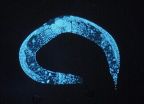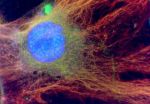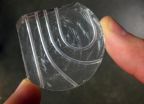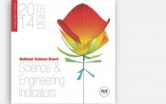(Press-News.org) Johns Hopkins researchers report that fetal mice — especially males — show signs of brain damage that lasts into their adulthood when they are exposed in the womb to a maternal immune system kicked into high gear by a serious infection or other malady. The findings suggest that some neurologic diseases in humans could be similarly rooted in prenatal exposure to inflammatory immune responses.
In a report on the research published online last week in the journal Brain, Behavior and Immunity, the investigators say that the part of the brain responsible for memory and spatial navigation (the hippocampus) was smaller over the long term in the male offspring exposed to the overactive immune system in the womb. The males also had fewer nerve cells in their brains and their brains contained a type of immune cell that shouldn't be present there.
"Our research suggests that in mice, males may be more vulnerable to the effects of maternal inflammation than females, and the impact may be life long," says study leader Irina Burd, M.D., Ph.D., an assistant professor of gynecology/obstetrics and neurology at the Johns Hopkins University School of Medicine and director of the Integrated Research Center for Fetal Medicine. "Now we wonder if this could explain why more males have diseases such as autism and schizophrenia, which appear to have neurobiological causes."
For the study, researchers sought to mimic the effects of a maternal infection or other condition that causes inflammation in a pregnant mother. This type of inflammation between 18 and 32 weeks of gestation in humans has been linked to preterm birth as well as an imbalance of immune cells in the brain of the offspring and even death of nerve cells in the brains of those children. Burd and her colleagues used a mouse model to study what happens to the brains of those offspring as they age into adulthood to see if the effects persisted.
One group of pregnant mice got saline injections into the womb, while another group got injections of lipopolysaccharide (LPS), a toxin meant to generate the kind of inflammatory effects of E. coli bacteria without the presence of the germ itself.
Soon after birth, the LPS group showed poor motor skills and behavioral issues such as hyperactivity. At 60 days post-weaning — the equivalent of mouse adulthood — the LPS mice could walk well, but were still hyperactive, suggesting the motor problems had resolved, possibly through some type of rewiring of the brain, but the behavioral problems had not.
"All this time later, something was still going on in their brains," Burd says.
The sex-specific differences — the smaller hippocampus, the presence of fewer nerve cells, the existence of immune system macrophages in places they shouldn't be — were also found in adulthood.
Chronic inflammation, Burd says, may play a role in keeping the hippocampus small, potentially because it inhibits proper brain development. But why males and females respond differently to the same insult in utero remains a question.
Unraveling the sex-based mechanisms underlying the response to maternal inflammation could provide critical knowledge necessary to develop interventions and potentially new drug therapies, she says.
INFORMATION:
Other Johns Hopkins researchers involved in the study include Tahani Dada, M.D.; Jason M. Rosenzweig, Ph.D.; Mofeedah Al Shammary, M.D.; Wance Firdaus, Ph.D.; Shorouq Al Rebh, M.D.; Talaibek Borbiev, Ph.D.; Aylin Tekes, M.D.; Jiangyang Zhang, Ph.D.; Eman Alqahtani, M.D.; Susumu Mori, Ph.D.; Mikhail V. Pletnikov, M.D., Ph.D.; and Michael V. Johnston, M.D.
The research was supported by the Aramco Services Company Fellowship Fund, the National Institutes of Health's National Institute of Child Health and Human Development (K08HD073315), National Institute of Neurological Disorders and Stroke (NS28208), National Institute of Biomedical Imaging and Bioengineering (R01 EB003543) and the Johns Hopkins Brain Science Institute.
For more information:
http://www.hopkinsmedicine.org/gynecology_obstetrics/specialty_areas/obstetrics_services/research/Our%20Team/Burd.html
Johns Hopkins Medicine (JHM), headquartered in Baltimore, Maryland, is a $6.7 billion integrated global health enterprise and one of the leading health care systems in the United States. JHM unites physicians and scientists of the Johns Hopkins University School of Medicine with the organizations, health professionals and facilities of The Johns Hopkins Hospital and Health System. JHM's vision, "Together, we will deliver the promise of medicine," is supported by its mission to improve the health of the community and the world by setting the standard of excellence in medical education, research and clinical care. Diverse and inclusive, JHM educates medical students, scientists, health care professionals and the public; conducts biomedical research; and provides patient-centered medicine to prevent, diagnose and treat human illness. JHM operates six academic and community hospitals, four suburban health care and surgery centers, and more than 30 primary health care outpatient sites. The Johns Hopkins Hospital, opened in 1889, was ranked number one in the nation for 21 years in a row by U.S. News & World Report.
Immune system 'overdrive' in pregnant women puts male child at risk for brain disorders
Findings suggest similar origins of some cases of schizophrenia and autism in humans
2014-02-06
ELSE PRESS RELEASES FROM THIS DATE:
Source of chlamydia reinfections may be GI tract
2014-02-06
The current standard of care treatment for chlamydia sometimes fails to eradicate the disease, according to a review published ahead of print in Infection and Immunity, and the culprit may be in the gut.
Chlamydia trachomatis not only infects the reproductive tract, but abides persistently—though benignly—in the gastrointestinal tract. There it remains even after eradication from the genitals by the antibiotic, azithromycin, says first author Roger Rank, of the Arkansas Children's Research Institute, Little Rock. And that reservoir is likely a source of the all-too-common ...
Scientific review points to supplement users engaging in a pattern of healthy habits
2014-02-06
Washington, D.C., February 6, 2014—Dietary supplement users take these products as just one component of a larger effort to develop a healthier lifestyle, according to a newly published review in Nutrition Journal, a peer-reviewed scientific publication. The review, "Health Habits and Other Characteristics of Supplement Users" (Nutrition Journal.2014, 13:14), co-authored by Council for Responsible Nutrition (CRN) consultant Annette Dickinson, Ph.D., and CRN's senior vice president, scientific and regulatory affairs, Duffy MacKay, N.D., examined data from 20 peer-reviewed ...
Global regulator of mRNA editing found
2014-02-06
An international team of researchers, led by scientists from the University of California, San Diego School of Medicine and Indiana University, have identified a protein that broadly regulates how genetic information transcribed from DNA to messenger RNA (mRNA) is processed and ultimately translated into the myriad of proteins necessary for life.
The findings, published today in the journal Cell Reports, help explain how a relatively limited number of genes can provide versatile instructions for making thousands of different messenger RNAs and proteins used by cells in ...
Toxin from brain cells triggers neuron loss in human ALS model
2014-02-06
NEW YORK, NY (February 6, 2014) — In most cases of amyotrophic lateral sclerosis (ALS), or Lou Gehrig's disease, a toxin released by cells that normally nurture neurons in the brain and spinal cord can trigger loss of the nerve cells affected in the disease, Columbia researchers reported today in the online edition of the journal Neuron.
The toxin is produced by star-shaped cells called astrocytes and kills nearby motor neurons. In ALS, the death of motor neurons causes a loss of control over muscles required for movement, breathing, and swallowing. Paralysis and death ...
New insight into an emerging genome-editing tool
2014-02-06
The potential is there for bacteria and other microbes to be genetically engineered to perform a cornucopia of valuable goods and services, from the production of safer, more effective medicines and clean, green, sustainable fuels, to the clean-up and restoration of our air, water and land. Cells from eukaryotic organisms can also be modified for research or to fight disease. To achieve these and other worthy goals, the ability to precisely edit the instructions contained within a target's genome is a must. A powerful new tool for genome editing and gene regulation has ...
Credit card-sized device could analyze biopsy, help diagnose pancreatic cancer in minutes
2014-02-06
Pancreatic cancer is a particularly devastating disease. At least 94 percent of patients will die within five years, and in 2013 it was ranked as one of the top 10 deadliest cancers.
Routine screenings for breast, colon and lung cancers have improved treatment and outcomes for patients with these diseases, largely because the cancer can be detected early. But because little is known about how pancreatic cancer behaves, patients often receive a diagnosis when it's already too late.
University of Washington scientists and engineers are developing a low-cost device that ...
UI researchers evaluate best weather forecasting models
2014-02-06
Two University of Iowa researchers recently tested the ability of the world's most advanced weather forecasting models to predict the Sept. 9-16, 2013 extreme rainfall that caused severe flooding in Boulder, Colo.
The results, published in the December 2013 issue of the journal Geophysical Research Letters, indicated the forecasting models generally performed well, but also left room for improvement.
David Lavers and Gabriele Villarini, researchers at IIHR—Hydroscience and Engineering, a world-renowned UI research facility, evaluated rainfall forecasts from eight different ...
Nanoparticle pinpoints blood vessel plaques
2014-02-06
A team of researchers, led by scientists at Case Western Reserve University, has developed a multifunctional nanoparticle that enables magnetic resonance imaging (MRI) to pinpoint blood vessel plaques caused by atherosclerosis. The technology is a step toward creating a non-invasive method of identifying plaques vulnerable to rupture–the cause of heart attack and stroke—in time for treatment.
Currently, doctors can identify only blood vessels that are narrowing due to plaque accumulation. A doctor makes an incision and slips a catheter inside a blood vessel in the arm, ...
Loose coupling between calcium channels and sensors
2014-02-06
This news release is available in German. Information transmission at the synapse between neurons is a highly complex, but at the same time very fast, series of events. When a voltage change, the so-called action potential, reaches the synaptic terminal in the presynaptic neuron, calcium flows through voltage-gated calcium channels into the presynaptic neuron. This influx leads to a rise in the intracellular calcium concentration. Calcium then binds to a calcium sensor in the presynaptic terminal, which in turn triggers the release of vesicles containing neurotransmitters ...
US lead in science and technology shrinking
2014-02-06
The United States' (U.S.) predominance in science and technology (S&T) eroded further during the last decade, as several Asian nations--particularly China and South Korea--rapidly increased their innovation capacities. According to a report released today by the National Science Board (NSB), the policy making body of the National Science Foundation (NSF) and an advisor to the President and Congress, the major Asian economies, taken together, now perform a larger share of global R&D than the U.S., and China performs nearly as much of the world's high-tech manufacturing as ...
LAST 30 PRESS RELEASES:
Groundbreaking mapping: how many ghost particles all the Milky Way’s stars send towards Earth
JBNU researchers propose hierarchical porous copper nanosheet-based triboelectric nanogenerators
A high-protein diet can defeat cholera infection
A more accurate way of calculating the value of a healthy year of life
What causes some people’s gut microbes to produce high alcohol levels?
Global study reveals widespread burning of plastic for heating and cooking
MIT study shows pills that communicate from the stomach could improve medication adherence
Searching for the centromere: diversity in pathways key for cell division
Behind nature’s blueprints
Researchers search for why some people’s gut microbes produce high alcohol levels
Researchers find promising new way to boost the immune response to cancer
Coffee as a staining agent substitute in electron microscopy
Revealing the diversity of olfactory receptors in hagfish and its implications for early vertebrate evolution
Development of an ultrasonic sensor capable of cuffless, non-invasive blood pressure measurement
Longer treatment with medications for opioid use disorder is associated with greater probability of survival
Strategy over morality can help conservation campaigns reduce ivory demand, research shows
Rising temperatures reshape microbial carbon cycling during animal carcass decomposition in water
Achieving ultra-low-power explosive jumps via locust bio-hybrid muscle actuators
Plant-derived phenolic acids revive the power of tetracycline against drug-resistant bacteria
Cooperation: A costly affair in bacterial social behaviour?
Viruses in wastewater: Silent drivers of pollution removal and antibiotic resistance
Sub-iethal water disinfection may accelerate the spread of antibiotic resistance
Three in four new Australian moms struggle with body image
Post-stroke injection protects the brain in preclinical study
Cardiovascular risk score predicts multiple eye diseases
Health: estimated one in ten British adults used or interested in GLP-1 medications for weight loss
Exercise to treat depression yields similar results to therapy
Whooping cough vaccination for pregnant women strengthens babies’ immune system
Dramatic decline in new cases of orphanhood in Uganda driven by HIV treatment and prevention programs
Stopping weight loss drugs linked to weight regain and reversal of heart health markers
[Press-News.org] Immune system 'overdrive' in pregnant women puts male child at risk for brain disordersFindings suggest similar origins of some cases of schizophrenia and autism in humans






